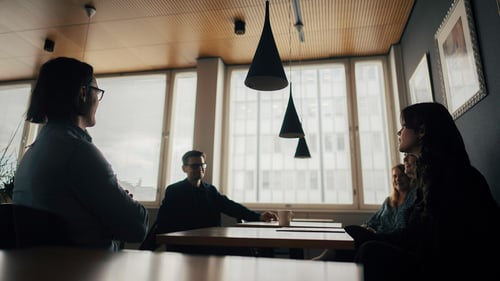On 9 March 2021 the European Court of Justice (CJEU) issued its highly anticipated decision concerning the criteria for “communication to the public” in the context of linking in C‑392/19 VG Bild-Kunst v Stiftung Preußischer Kulturbesitz.
Background
The Information Society Directive (Directive 2001/29/EC of the European Parliament and of the Council of 22 May 2001 on the harmonisation of certain aspects of copyright and related rights in the information society) contains an obligation for all EU member states to provide authors with the exclusive right to authorise or prohibit any communication to the public of their works. The interpretation of the legal concept “communication to the public” has been decisive in assessment whether or not an author´s consent is required for linking on the internet.
In an earlier decision, Svensson and Others (C466/12, EU:C:2014:76) - the CJEU ruled that providing clickable links to works that are freely available on another website did not constitute an “act of communication to the public”. In the absence of a “new public”, no new authorization was required. BestWater International (C‑348/13, not published EU:C:2014:2315) went further and held that the new public criteria would apply to linking that involves framing techniques, provided that the techniques of secondary communication are the same as the techniques in the original communication.
The CJEU Bild-Kunst Decision
According to the CJEU in Bild-Kunst, it is necessary to analyse authorization more closely rather than focusing merely on whether linking constitutes making a work available to a new public with similar technical measures.
The CJEU concluded in Bild-Kunst that:
[…] embedding, by means of the technique of framing, in a third-party website page, of works that are protected by copyright and that are freely accessible to the public with the authorisation of the copyright holder on another website, where that embedding circumvents measures adopted or imposed by that copyright holder to provide protection from framing, constitutes a communication to the public within the meaning of [the information society directive].
The CJEU focused in particular on measures that copyright owners take or require its licensees to take to protect the works in connection with the original communication and noted that even though the technique of communication is same as the original communication (internet), the copyright holder in Bild-Kunst had taken active steps to protect the works from being embedded on another site with the intention of limiting the availability of the works only to the subscribers of its licensees.
CJEU also noted that, in contrast, no restrictive measures were used in the previous cases Svensson and Others and BestWater and that the term “new public” had been previously characterized as public that was not already taken into account by the copyright holder when he or she authorised the initial communication.
Unlike the circumstances in Svensson and Others and BestWater, the assumption that the copyright owner must have taken into account the target group of secondary communication and implicitly consented to communication could not to be applied in the Build Kunst case as such. Since embedding by means of framing would indicate circumvention of actively imposed technical restrictive measures, the CJEU decided that embedding by framing would constitute communication that is targeted to a “new public”.
In Bild-Kunst the CJEU noted that its earlier decisions stress the importance of authorisation, which specifically provides that each act of communication of a work to the public must be authorised by the copyright holder. In addition, the CJEU cited previous case law to justify the conclusions that communication to the public requires individual assessment (Stichting Brein, C527/15, EU:C:2017:456, paragraph 23 and the case-law cited) and that several complementary criteria exist, which are applied both individually and collectively (Stim and SAMI, C753/18, EU:C:2020:268, paragraph 31 and the caselaw cited). The CJEU also noted that a contrary decision would fail to recognize the exclusive right of the author and lead to an undesirable legal rule on exhaustion of the right of communication.
The CJEU also referred to previous case law in its consideration of measures that would qualify as a limitation of authorisation. According to paragraph 46 of the judgment, the measures should be technical and meet the definitions provided in Article 6 (1) and (3) of the Information Society Directive. The CJEU stated that ‘ensuring legal certainty and the smooth functioning of the internet, the copyright holder cannot be allowed to limit his or her consent by means other than effective technological measures.” (citing Nintendo and Others, C‑355/12, EU:C:2014:25, paragraphs 24, 25 and 27). The cited cases did not discuss why the measures would be important for smooth functioning of the internet or legal certainty but what kind of devices can be effective and confirmed that they protect against acts that require authorization from the copyright owners.
The CJEU further noted that ‘in the absence of such measures, it might prove difficult, particularly for individual users, to ascertain whether that right holder intended to oppose the framing of his or her works. To do so might prove even more difficult when that work is subject to sub-licences’. (citing GS Media, C‑160/15, EU:C:2016:644, paragraph 46 by analogy).
Conclusion
The CJEU´s teleological interpretation is very welcome in maintaining the non-exhaustive nature of the right of communication, but at the same time it raises questions in relation to the need for effective technical measures. According to paragraph 46, to ensure that original communication does not target all users of internet as the relevant public, the standard technical measures defined in the article 6 of Information Society Directive, namely “technology, devices or components used in the normal course of operation, that are designed to prevent or restrict acts, in respect of works or other subject-matter" are not sufficient. Instead, limiting the initial authorization to a specific target groups requires “effective technological measures” which means that the measures should ensure that the use of a protected work or other subject-matter is controlled by right holders through application of an access control or protection process, such as encryption, scrambling or other transformation of the work or other subject-matter or a copy control mechanism”.
“In the context of assessing the scope of initial authorization and whether subsequent communications could reach a “new public” the requirement of effective technical measures would have required further grounds.” It is a special and additional criterion that does not reflect the intent of the right holder and it is still uncertain if less demanding measures could have been sufficient to provide individuals with sufficient information and certainty on the right holder’s intent to protect the works.





